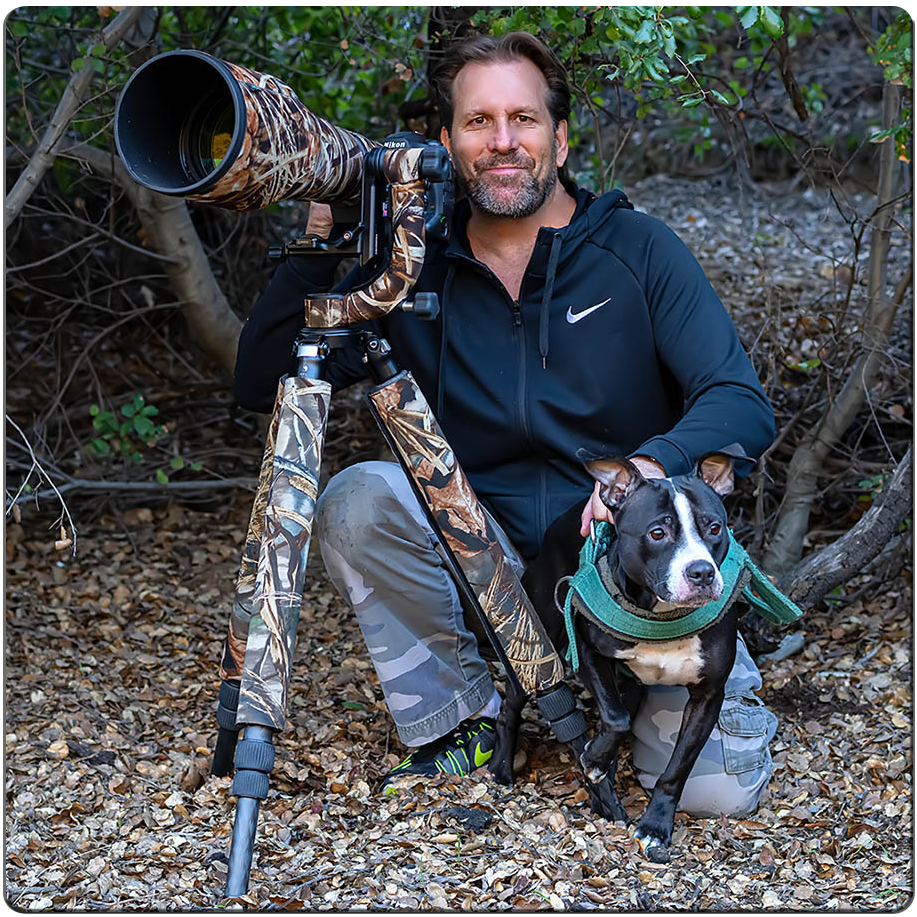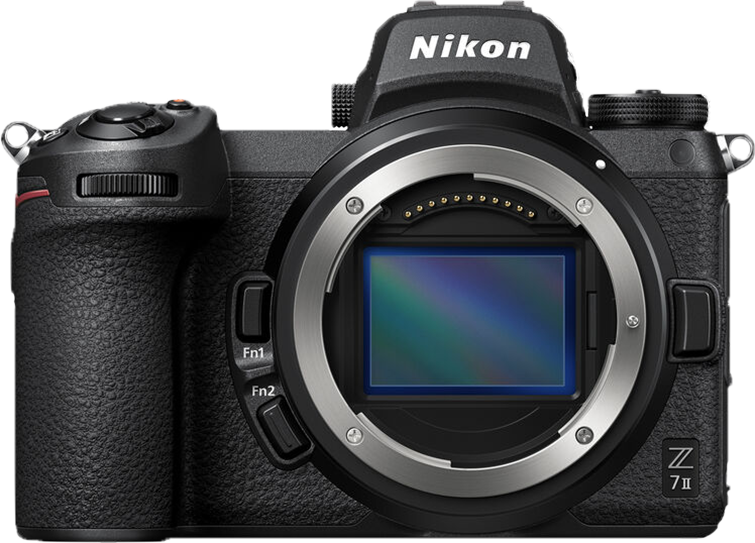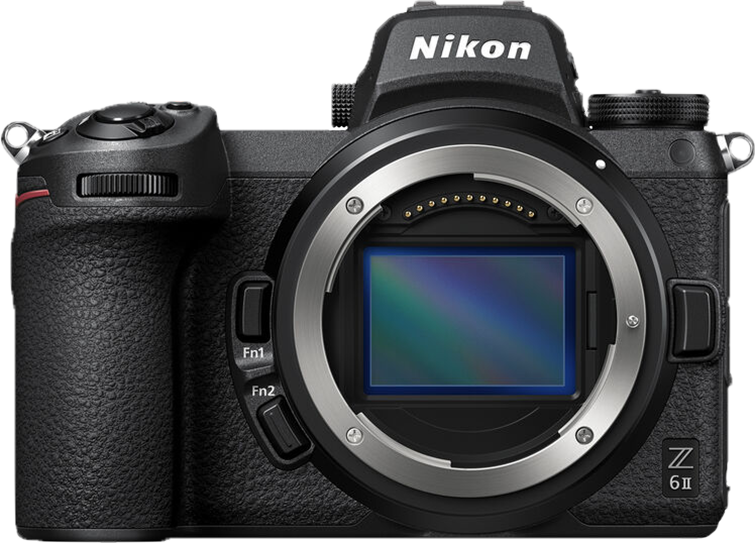Nikon Mirrorless Cameras
I have now switched-over to mirrorless cameras completely. The brands I had tried previously (Sony, etc.) felt like non-ergonomic, cheap-feeling “toys,” compared to my Nikon professional DSLRs. The difference in robustness was noticeable, so I continued to wait patiently for more serious offerings. I realized that, while a person may “upgrade” internal software “with downloads,” he can’t ‘upgrade’ actual structural deficiencies,in the camera itself, such as poor build quality, bad ergonomics, etc. In other words, your camera either has a solid fit & finish (and rugged durability)—or it does not. So when Nikon finally came out with the Z-line of mirrorless cameras, I was pleased to learn they have both. I can download all of the latest technical innovations, while at the same time I am using a an actually-rugged tool, that’s built-to-last, and which also feels ergonomically-excellent in my hands.
The other reason I chose Nikon’s Z-Mount is its 16mm flange distance, mated with its 55mm throat width (the largest in the industry), which means Nikon’s Z-Mount lenses will always have engineering advantages over what is available from other systems. These larger dimensions also mean, if another brand comes out with a particularly unique lens, its smaller mount can be adapted to the Z-Mount. (Conversely, no other system can be adapted to Nikon’s Z-mount ‘S’ lenses, because of these measurements.) In other words, I can enjoy all of the stellar “S” lenses specifically for the Nikon Z-Mount, plus I can use any lens, from any other manufacturer. This makes Nikon’s Z-Mount the most flexible option, which gives a decided non-reciprocal advantage.
Nikon Z9
Why do I say “penultimate?” (I will tell you why, but first let’s give this camera its due.)
This is the first man-sized, pro-specced mirrorless camera ever designed. Not “toy-sized”; I said man-sized. When mirrorless cameras first came out, there were a lot of people who wanted all mirrorless cameras to be “small & light.”
Well, that’s understandable, if you’re shooting a 20mm lens, just strolling around the park—but if you’re a deploying a 400mm, 600mm, or 800mm lens—after hiking for hours to get yourself (and all your gear) into position behind a tripod—you will quickly realize having a “tiny toy camera” at the end of your massive lens is far from optimal. The truth is, having a larger, more rugged camera is actually important for counter-balancing a large lens on a gimbal head, as well as for control and space to switch between features and buttons when panning.
That said, while the size and features of the Z9 are great, here is why I consider it to be “penultimate”: its sensor is not optimal. The truth is, it’s mid-level. The Z9 sensor is neither as good as the Z7’s (at base ISO), nor is as good as the Z6’s (at high-ISOs). I’ve owned Nikon’s best low-light cameras, the D5 and the Z6, and the Z9 is below par, by comparison. So while the Z9 body robustness and AF system are top-tier, its sensor is a disappointment.
Why? Well, if you’ve ever shot an 800/5.6 lens in the early morning (especially w/ a 2x TC on it @ 1600mm f/11), you quickly realize your ISOs will be at 4000 to 25,600 … and the Z9 sensor cannot handle anything close to this. People with lenses of this quality and size need smaller files, and higher ISO capability.
That’s why I call the Z9 “penultimate”: those of us who shoot long glass are still waiting for this exact same Z9 camera to come with a Z6 sensor, or a D5 sensor, or better, optimized for low-light/high-ISO. That said, the following programs can help you with the current Z9’s comparatively-poor handling of high-ISO noise:
* Adobe Lightroom
* DxO DeepPRIME
* Neat Image
* Topaz DeNoise
In closing, overall, this is the most capable camera I have ever used, and (up to maybe 2500 ISO), this camera is truly incredible. Can’t wait for the same, great camera to be available in the future, but with a much better sensor for long glass and high-ISOs. Rumor has it Nikon is coming out with a Z9H ~ which, I suspect, addresses exactly this issue, so … fingers crossed 🤞
See @ Nikon: Nikon Z9
Nikon Z7 II and Z7 I
The Z7 II and I are essentially incremental, mirrorless successions to the D850 DSLR, which I owned for many years. The Z7s have the same beautiful, base ISO color + dynamic range as the D850, but (after the recent firmware updates), they are each superior in 5 important ways:
1) Each has Eye AF, which makes them great for human portraits (pets also!);
2) Their “In-Body Image Stabilization” (IBIS) significantly amplifies the effectiveness of any manual-focus lens, as well as any quality AF lens without VR (and I have many stellar lenses of both types);
3) The Z7s have class-leading EVFs, which enhance the ability to see critical detail;
4) Their ability to focus-peak, when hand-holding, is another enhancement which no DSLR can duplicate;
5) Finally, in addition to the above, the Z-Mount also allows me to use the best lenses from any other brand (like Leica’s finest optics, or Sony’s), which is another huge plus for me, as a connoisseur of fine glass.
All-in-all, I now use my Z7 cameras exclusively, for my non-action nature as well as critical macro work. These cameras are much smaller than the Z9, and so they are more suitable as “walk-around” cameras. In optimal light, both of these Z7 cameras deliver.
See @ Nikon: Nikon Z7 II
Nikon Z6 II
The Nikon Z6 II is essentially identical to the Nikon Z7 II, enjoying every single advantage enumerated above. However, the Z6 II enjoys 3 additional, significant advantages for certain types of shooting:
1) It has smaller sensor size (24.5 MP, rather than 45.7 MP);
2) It has superior low-light capability;
3) And, because it’s mirrorless, I can use a 2x TC with my 800mm f/5.6 lens.
While the Z7 has big beautiful files, “huge file size” is not what I always want or need. For instance, when I shoot birds or butterflies (in rapid succession) I don’t necessarily want or need hundreds of massive files, taking up space on my hard drives. Smaller is better and more manageable.
Also, and more importantly, while the Z7 II is like the D850 (operating best at Base ISO), the Z6 II really shines @ high-ISOs, beating the Z7 in noise-reduction, and significantly. The Z6 II has almost the same High-ISO ability of Sony’s A92 (but neither is quite as clean as the D5).
Finally, as a mirrorless camera, the Z6 also has an advantage over any DSLR, because it retains auto-focus ability on my 800mm f/5.6 lens, allowing me to use a 2x TC. (No DSLR can retain AF w/ a 2x TC., on an 800/5.6, but the Z-Mount cameras can.) This means, for long-distance bird portraiture, even in low light, I can shoot at 1600mm f/11 and still retain AF, while enjoying nearly-equal image quality to the D5, in terms of high-ISO handling of image noise. For those who shoot large super-telephoto lenses, you know how important this is.
That said, as great as its high-ISO files look, this camera is very limited as an action camera. Therefore, my hope is that Nikon makes a “Z9H” (for low-light), carrying all of the new AF advancements of the Z9, as well as its robust size, but using a Z6 sensor, or better. When that happens, I will definitely upgrade. Meanwhile, the Z6 II will remain my choice for “events,” night activity in the city, get-togethers, etc., with its beautiful, clean files.
See @ Nikon: Nikon Z6 II





